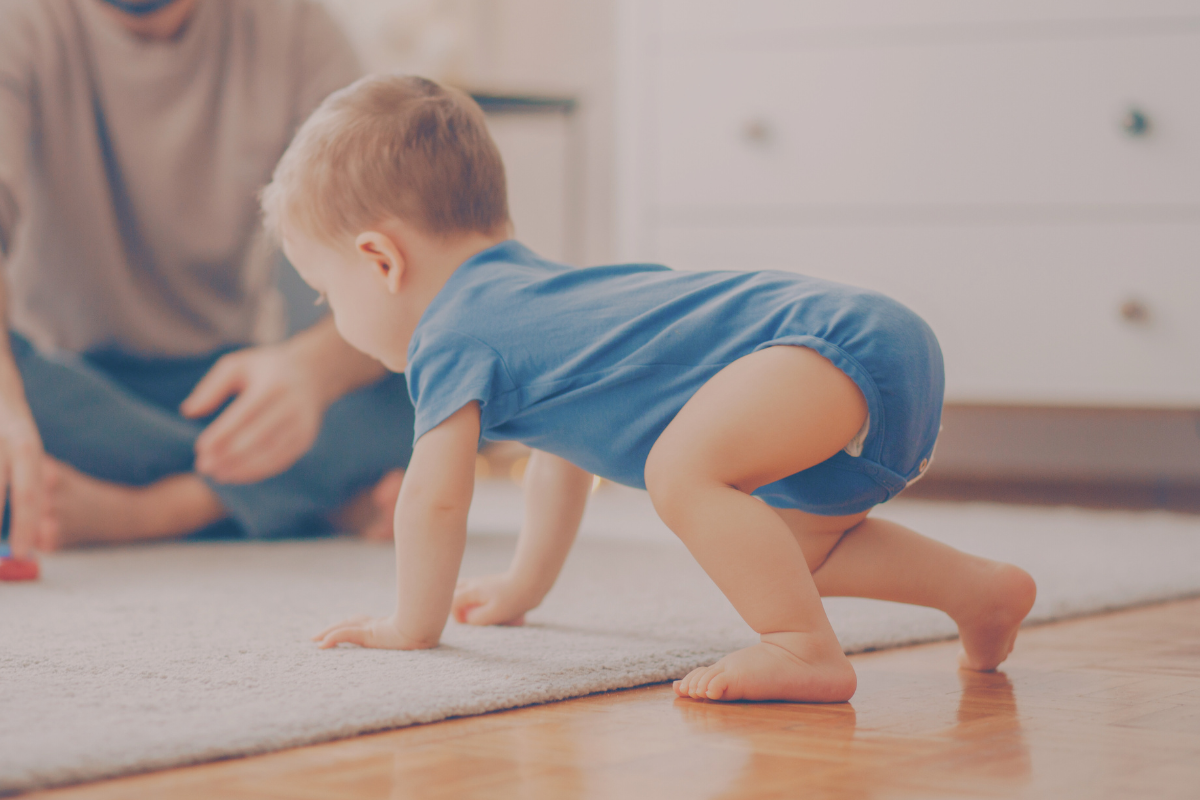Motor Skill Development in Young Children: Identifying Motor Skill Milestones & Delays
Motor skills are the real MVPs laying down the groundwork for kids to slay in the cognitive, physical, and social arenas. Fine motor skills get those tiny muscles working, while gross motor skills bring the large muscles onto the big-league action. Together, they enable critical daily activities and are a key factor in a child’s development.
But sometimes, motor skills development doesn't go the way it's supposed to. When a child misses important motor skill milestones and encounters delays, it can understandably be quite concerning.
If you're a parent, an educator, or just anyone seeking to enrich these vital motor skills from early childhood, then you're in the right place.
In this detailed article, we'll explore what constitutes motor skills, how you can nurture them effectively and successfully, and how to identify motor skill milestones and delays in motor skills development.
The Importance of Motor Skills in Young Children's Development
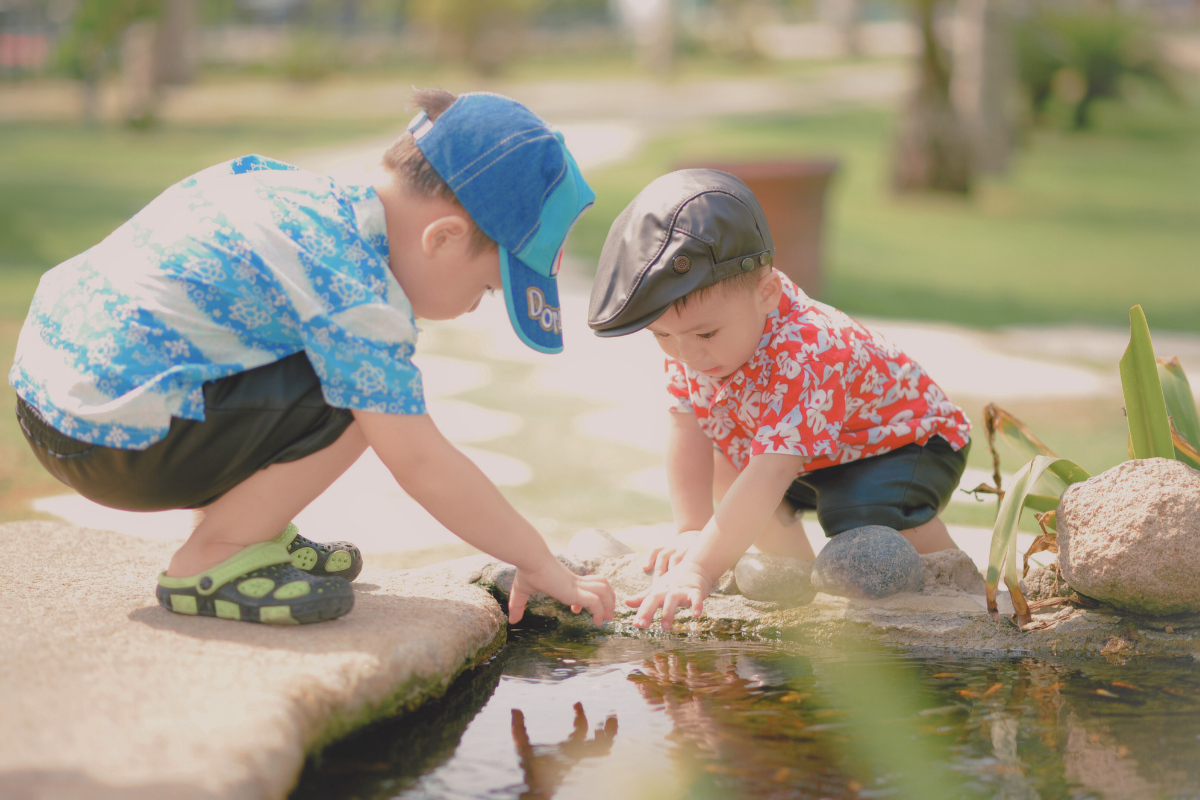
Ever watched a baby take their first steps? It’s not just about the cute waddle or the pure joy in their eyes -- though that’s definitely a highlight.
A baby's first steps is a monumental milestone that showcases the beauty of motor skill development. But why are these tottering steps so significant?
Well, think of motor skills—those muscle movements needed for daily tasks—as the unsung heroes of a child’s holistic growth. It’s like laying the foundation for a skyscraper of learning and independence.
And speaking of foundations, motor skills are the building blocks of your child's future. Each block represents a new skill, from the physical act of dancing to the cognitive task of solving a puzzle. As these blocks stack up, they form the foundation for subsequent cognitive development.
Besides, let’s face it, every parent knows the struggle of trying to keep up with a toddler who just learned to run -- it’s basically an Olympic sport. Or how about the pride when your kid finally manages to button their own coat? That’s a parenting win worth celebrating with an extra cup of coffee!
Cognitive Benefits of Motor Skill Development
You might be thinking, “Sure, motor skills help my child dance or swim, but how does that translate to cognitive abilities?”
Simply put, developing motor skills paves the way for enhancing cognitive abilities such as problem-solving, critical thinking, and learning. Not that this is a surprise, since the Central Nervous System (CNS) actually handles basic motor and sensory development.
In fact, numerous studies have shown that the relationship between motor skills and cognitive development is deeply intertwined.
For instance, research highlights how motor skills developed through physical activities are linked to improvements in cognitive functions such as attention, memory, and executive function. Even singular bouts of physical activity is enough to improve a child's cognitive functioning.
Another comprehensive review underscores that long-term motor skill practice enhances overall cognitive efficiency, emphasizing the importance of strategic and open-ended motor learning.
One longitudinal study from the UK Millennium Cohort found that gross motor skills are positively associated with significant improvements in spatial working memory, while fine motor skills can predict academic success in subjects like English and science.
Physical Advantages of Strong Motor Skills
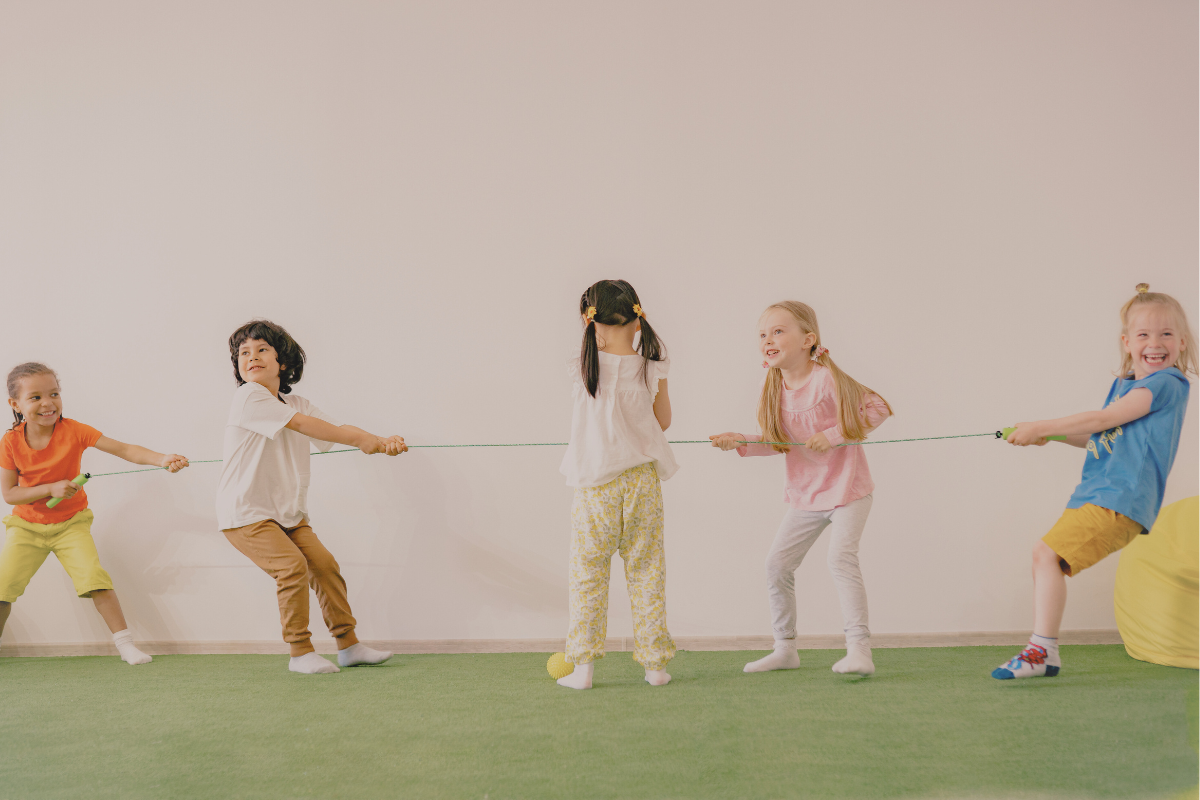
Nothing says "I love you" like an active game of "Jump on Dad" at 6 AM.
And if you've ever had this happen to you, you might think your child needs no help when it comes to developing their physical strength. We certainly find toddlers can be the best wrestlers in the world when they're in the mood, but to be fair, motor skill development plays a big role here.
Developing gross and fine motor skills throughout early childhood also helps a child develop physical advantages in everyday life. It's like giving your kids a superpower -- one that enhances their physical abilities and sets the stage for lifelong health and fitness.
One study showed that when children develop their gross and fine motor skills through everyday tasks or everyday activities, they also have boosted perceived motor competence and musculoskeletal health, in addition to being able to stay in a healthy weight range.
Physical activity is also known to help prevent musculoskeletal conditions in the future, even particularly painful ones like arthritis and osteoporosis. If that's not enough reason to get your child active and going, we don't know what is.
Social Impact of Motor Skills
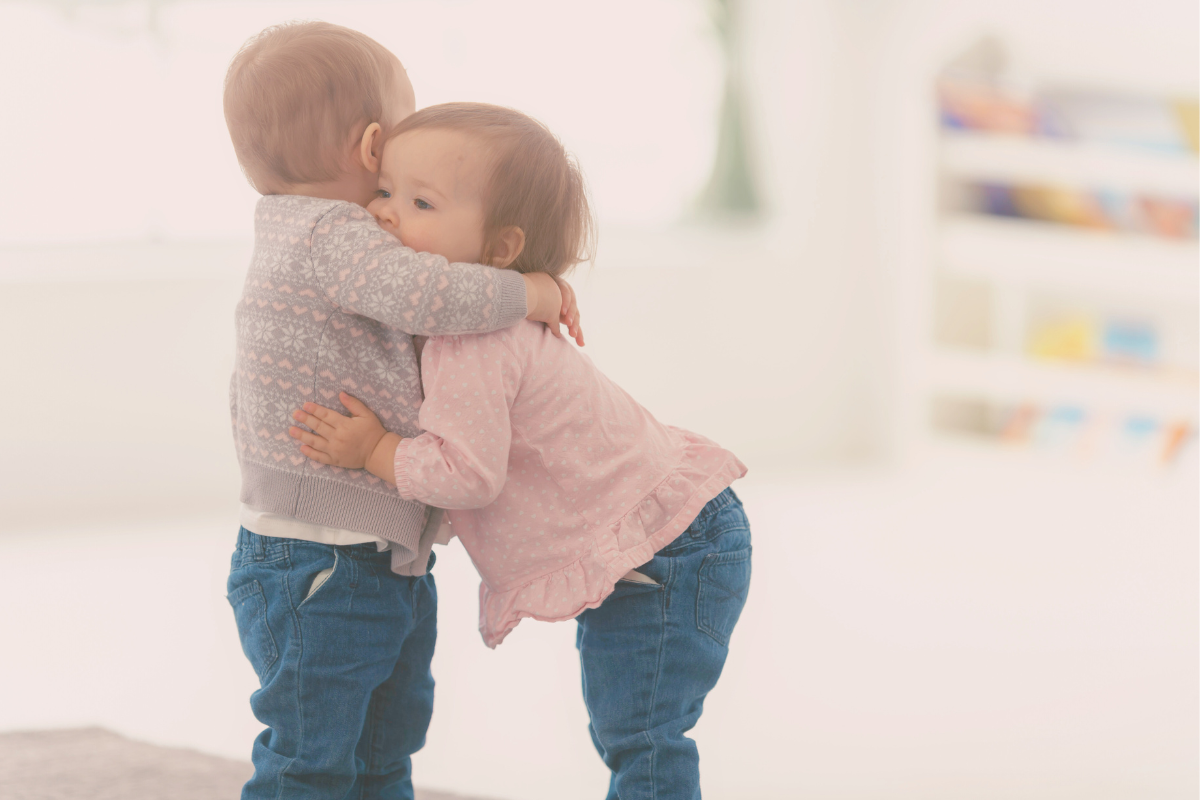
You may have heard the saying, “All work and no play makes Jack a dull boy.” The same principle applies to fundamental movement skills.
Mastering motor skills opens up a world of games and sports for children, enhancing their ability to make friends and learn essential social behaviors such as turn-taking.
A study from 2019 explored the relationship between motor skill development and social skill development in young children, including those with autism spectrum disorder (ASD).
The findings suggested that improvements in motor skills significantly enhance social interactions, communication, and participation in daily activities like playing sports. For instance, balance skills and coordination enable children to engage more effectively in social play, fostering relationships and reducing shyness.
But that’s not all. Active play not only aids in the development of motor skills but is also proven to promote speech development in preschoolers, allowing for the exploration and discovery of individual abilities.
So, the next time your little one invites you to join in their game, remember that it's not just play. It’s a social development class, a language lesson, and a motor skills workshop all rolled into one!
Motor Skill Categories: Fine and Gross
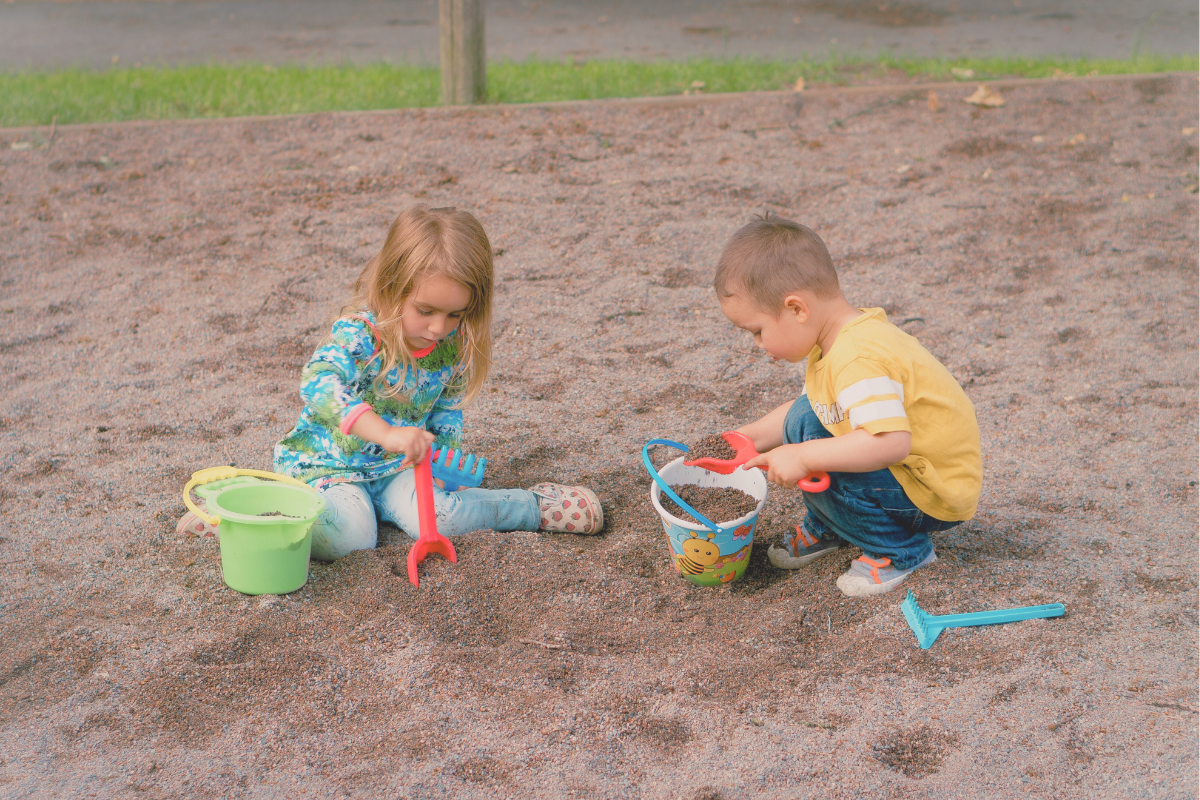
When you think of motor skills, what comes to mind? A toddler’s first wobbly steps or a child’s precise pencil grip?
Sorry, that was a trick question. Actually, both are correct! Motor skills encompass a wide range that can be divided into two primary categories, fine and gross.
Fine motor skills involve smaller muscle groups. Like the name implies, they're needed to perform tasks that need finer movements, like holding small objects or writing with a pencil. Basically, they're used to develop manual dexterity.
On the other hand, gross motor skills make use of bigger muscles. These include every locomotor skill you can think of, as well as non-locomotor skills like balancing on one foot or twisting your whole body.
Both fine and gross motor skills are equally important and work together to paint the masterpiece that is your child’s motor development.
Understanding Fine Motor Skills
Fine motor skills, as mentioned above, involve the use of smaller muscles, typically in the hand and wrist. These are absolutely essential for performing everyday tasks such as eating, writing, and getting dressed, and they require precision and coordination between the small muscles and the brain.
Activities that improve a child's fine motor skill includes:
-
Infants reaching for toys
-
Children engaging in activities such as building and constructing
-
Pencil control
-
Cutting with scissors
Fine motor skills are honed through time. It's natural for most young children to have trouble with fine motor control, such as object control, for the first few months or even years of their life.
Exploring Gross Motor Skills
Gross motor skills involve big moves and stealing the show. They use the large muscle groups to perform activities like running, jumping, and climbing. Whole body movements fall under gross motor development because they need larger muscle groups to be performed.
A single gross motor skill can have a big impact on a child's development, which is why physical education puts so much emphasis on them.
They also tend to be the first thing you'll notice in a child's developing motor function. The first time your baby learns to crawl, the first time they sit up, their first steps. These are all gross motor skills, and they're how we assess if our baby is meeting their milestones or experiencing motor delay.
In other words, many baby milestones are actually gross motor skill milestones, which goes to show how important gross motor skills are in human development, not just child development.
Motor Skill Milestones by Age
Speaking of milestones, motor skill development is also a journey filled with milestones, just like any other journey. These are the significant moments that mark your child’s growth in abilities.
Imagine these milestones as checkpoints in a video game. Each one signifies a new skill acquired, a new level achieved. As parents, it’s our job to guide our little gamers through this exciting journey, cheering them on as they reach each milestone, providing support when needed, and celebrating every victory.
That said, as motor skills develop, remember that every child is unique and may reach these milestones at their own pace.
Babies' Motor Skill Milestones
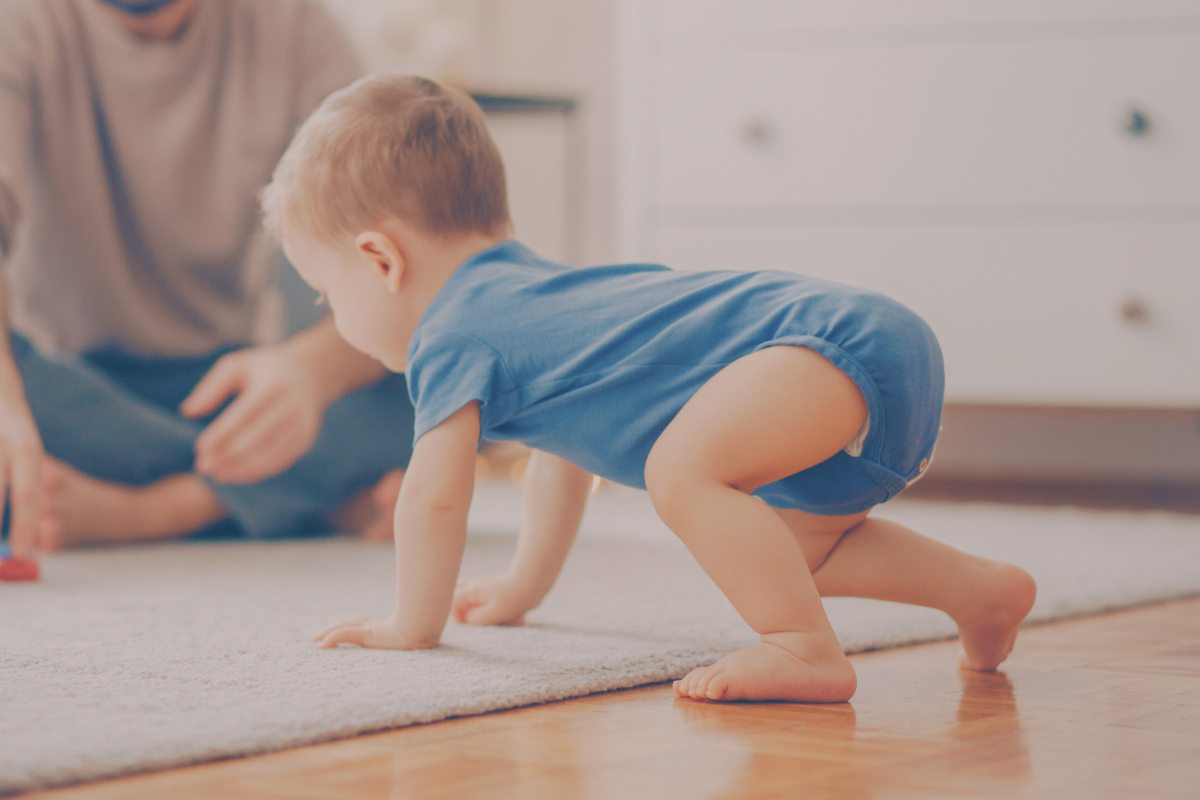
The journey of motor skill development begins in infancy. As parents, we eagerly wait for those first milestones. Here's a breakdown of key motor skill milestones, made up of both gross and fine motor skills, and tips to support your baby's development.
-
Lifting Head During Tummy Time
-
When: Around 1-3 months
-
How to Support: Encourage tummy time with soft mats like Poppyseed Play's Padded Play Mat to strengthen neck muscles.
-
-
Rolling Over
-
When: Around 4-6 months
-
How to Support: Place toys like Poppyseed Play's Silicone and Wood Teethers just out of reach to motivate rolling from back to belly.
-
-
Grasping Objects
-
When: Around 3-4 months
-
How to Support: Offer toys to enhance hand-eye coordination and grip strength. Poppyseed Play's Baby Gyms include beautiful and eye-catching toys that they can grasp safely.
-
-
Sitting Up Without Support
-
When: Around 6-8 months
-
How to Support: Provide plenty of floor time with pillows for safe practice.
-
-
Crawling
-
When: Around 7-10 months
-
How to Support: Encourage movement with enticing toys and clear, safe spaces for exploration. Poppyseed Play's Linen Play Mats provide enough protection for their knees without being too bulky to crawl on.
-
-
Pulling to Stand
-
When: Around 9-12 months
-
How to Support: Place sturdy furniture like the Poppyseed Play Montessori Climber and safe objects for them to grab and pull up.
-
-
Walking
-
When: Around 12-18 months
-
How to Support: Hold their hands while they take steps and provide push toys to build confidence.
-
Toddlers' Motor Skill Milestones
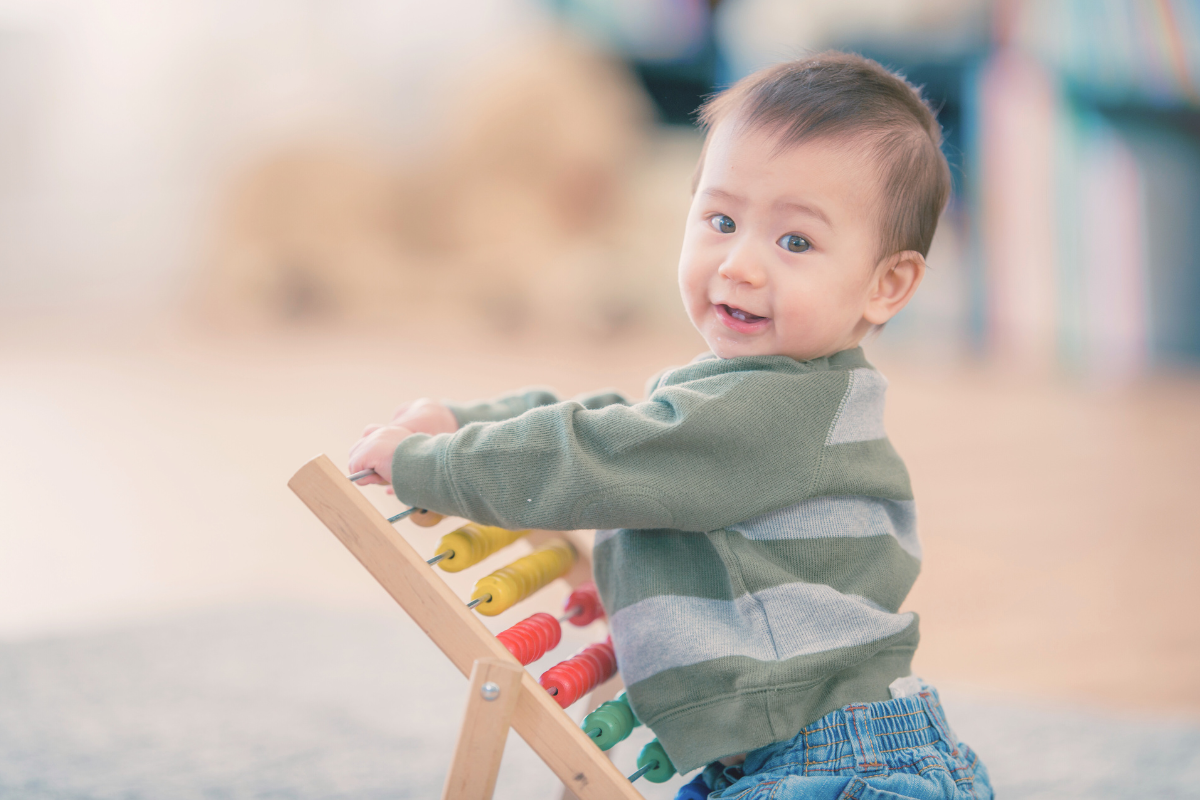
As babies grow into toddlers, their motor skill development journey becomes more exciting. Here are some key milestones and tips to support your toddler’s development.
-
Walking Independently
-
When: Around 12-18 months
-
How to Support: Provide safe spaces for walking and encourage exploration.
-
-
Running
-
When: Around 18-24 months
-
How to Support: Engage in playful chasing games and allow open areas for running.
-
-
Climbing Stairs
-
When: Around 18-24 months
-
How to Support: Assist with hand-holding. Aside from the Montessori Climber, you also get the Foldable Climbing Arch as an option for this one.
-
-
Balancing
-
When: Around 18-24 months
-
How to Support: Provide sturdy balancing materials to make sure their weight is fully supported. You can start them on Poppyseed Play's Wooden Balance Beams and move to the Wooden Balance Board once they've developed better balancing skills.
-
-
Stacking Blocks
-
When: Around 15-18 months
-
How to Support: Offer a variety of stacking toys and encourage building towers.
-
-
Drawing and Scribbling
-
When: Around 18-24 months
-
How to Support: Offer chunky crayons and large sheets of paper for creative expression.
-
-
Jumping
-
When: Around 24-30 months
-
How to Support: Hold hands while jumping together and provide low platforms for practice.
-
As parents, we can support this development by providing plenty of practice opportunities for both large and small movements. So, fasten your seatbelts because this stage of the journey is a thrilling ride!
Preschoolers' Motor Skill Milestones
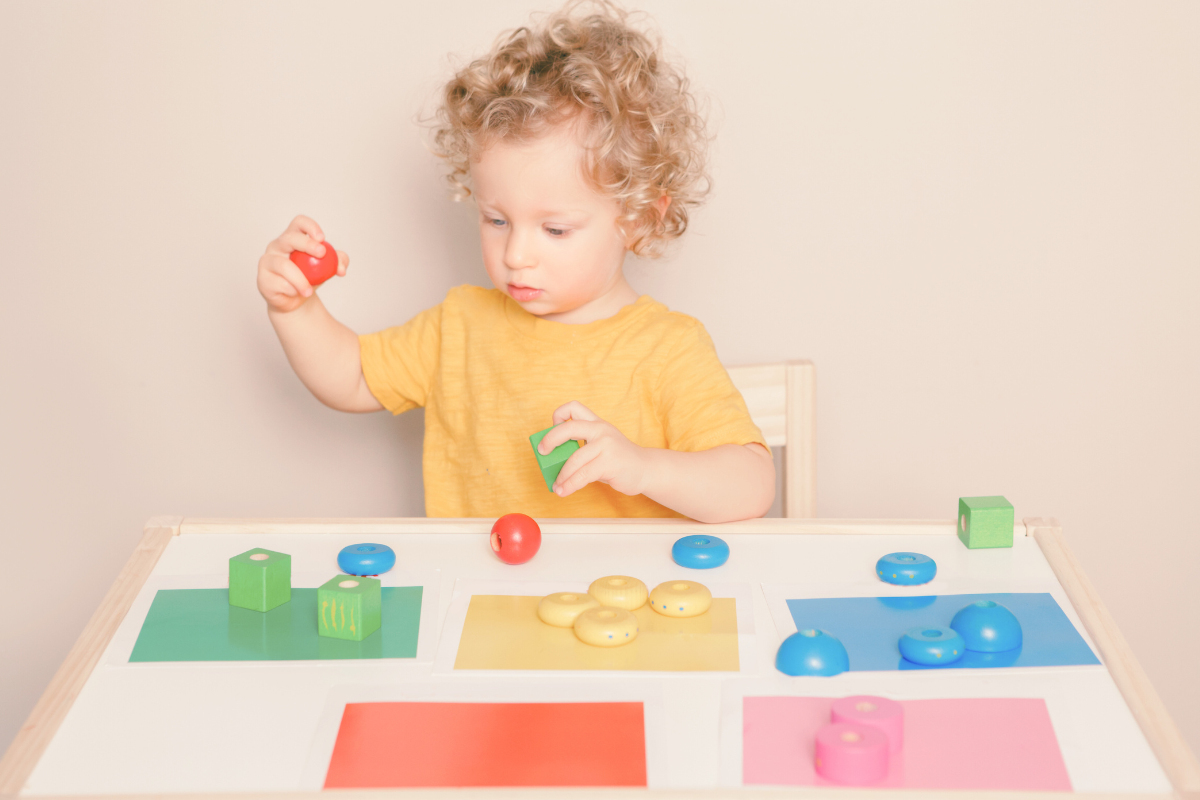
With the toddler years in the rearview mirror, your child now embarks on the early childhood stage of their motor skill development journey.
The preschool period is marked by new motor skills like jumping, balancing, and using utensils. It’s like watching your child level up in their favorite video game.
-
Jumping in Place
-
When: Around 2-3 years
-
Support: Encourage practice on soft surfaces and play games that involve jumping.
-
-
Climbing Stairs Unaided
-
When: Around 2-3 years
-
Support: Although they can now use Poppyseed Play's Ultimate Climbing Set on their own, you should still supervise them to make sure they use it properly.
-
-
Balancing on One Foot
-
When: Around 2.5-3 years
-
Support: Play balance games and encourage standing on one foot during activities.
-
-
Using Utensils
-
When: Around 2-3 years
-
Support: Provide child-friendly forks and spoons, and encourage self-feeding during meals.
-
-
Drawing Shapes
-
When: Around 3-4 years
-
Support: Offer various drawing materials and guide them in making simple shapes like circles and triangles.
-
At this stage, your child is not just running; they’re also enjoying gross motor skills like jumping and running and fine motor skills like using a pencil or utensils. It’s an exciting time filled with lots of “Look what I can do!” moments. As parents, our role is to cheer them on, provide plenty of practice opportunities, and celebrate every new skill mastered.
Supporting Your Child's Motor Skill Development

As parents and caregivers, our role in fostering our children’s motor skills is indispensable. We’re the cheerleaders, the coaches, and the fans all rolled into one. Our job is to encourage active play, provide opportunities for practice, and create a safe environment for our children to explore and grow without their training wheels in tow.
Think of it as creating the perfect playground for your child’s motor skill development. A place where they can freely explore and experiment. A place where they can be themselves and in the process, develop the motor skills that will serve them for a lifetime.
Encouraging Active Play
Active play serves as the magic formula for motor skill development. It’s fun, it’s engaging, and it’s effective. Active play promotes:
-
Muscle strength
-
Coordination
-
Control
-
Cognitive functions
-
Serial movements
-
Fine movements
-
Motor skills
Specific goal-oriented play activities for children aged 4.5 to 6 years include:
-
Walking on a balance beam
-
Moving sticks
-
Jumping goalposts
-
Throwing balls
-
Arranging blocks
These activities are like mini training sessions disguised as fun and games.
So, the next time your child wants to play, remember, it’s not just play -- it’s an exciting motor skill training session for their motor skills.
Then again, if your child doesn't seem keen on physical exercise, you know what they say: the best way to keep your child active is to turn off the Wi-Fi.
Providing Opportunities for Practice
The adage "practice makes perfect" holds true for motor skills as well. Incorporating repetitive practice into daily routines enhances motor skill development.
From assisting toddlers to walk up and down stairs safely to encouraging them to stack cubes, there are numerous ways to provide practice opportunities for your child to do their developmental milestones.
Each opportunity is like a mini workout, helping to strengthen your child’s motor skills and bring them one step closer to mastery.
Creating a Safe and Stimulating Environment
A safe environment is the foundation of motor skill development. It allows children to:
-
Explore and play without fear of injury
-
Foster their motor skill development
-
Create a safe playground where your child can freely explore, experiment, and express themselves.
Creating a safe environment involves keeping the play area free from potential hazards and ensuring that furniture and toys are stable. It’s about providing a space where your child can focus on developing their motor skills without having to worry about safety.
So, the next time you set up a play area for your child, remember, safety first!
Identifying and Addressing Motor Skill Delays
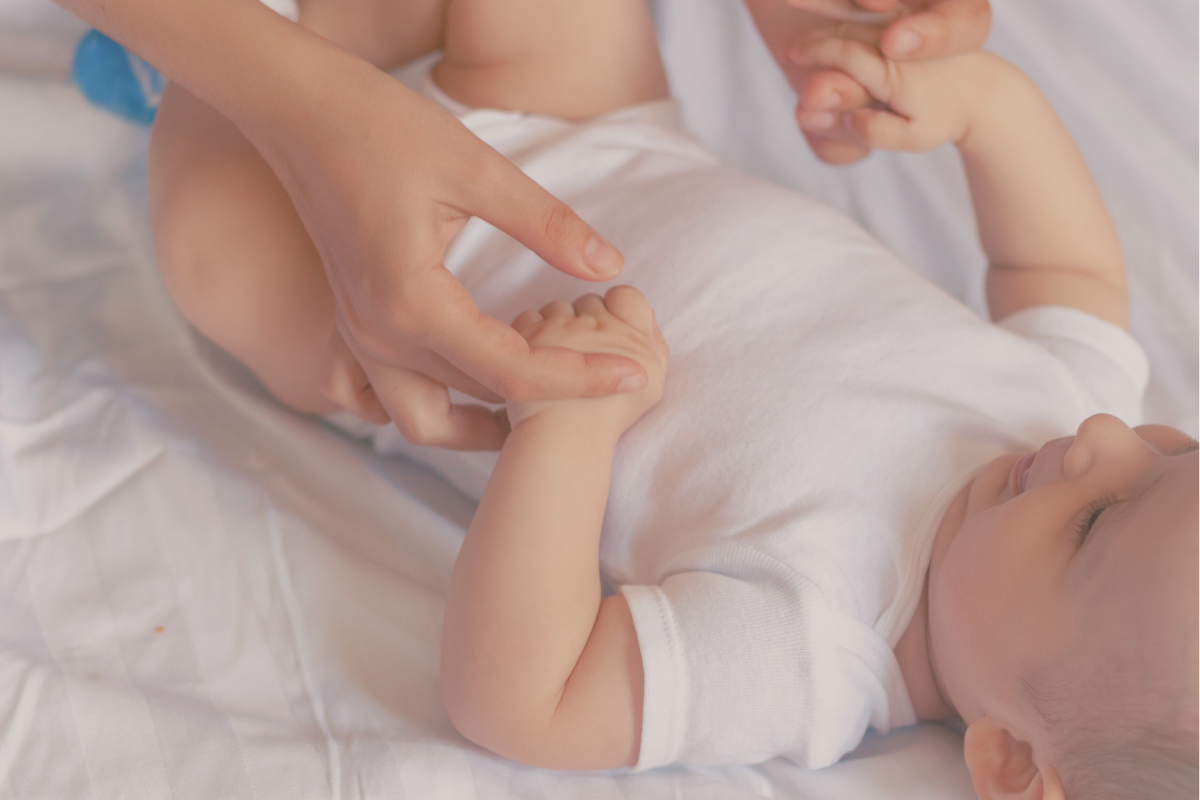
While observing our children reach their motor skill milestones is thrilling, it's also important to be mindful of potential motor skill delays. Delays in developmental milestones can stem from various conditions, like low muscle tone, birth-related complications like hypoxia and hydrocephalus, or even premature birth.
Early identification is crucial to address these issues effectively. Delays can impact the development of fine motor skills more than gross motor skills.
If you notice any signs of motor skill delays in your child, it’s important to discuss these concerns with your pediatrician. Remember, it’s not just about reaching the milestones. It’s about ensuring that your child’s motor skill development journey is smooth and enjoyable.
Recognizing Signs of Motor Skill Delays
As parents, it's crucial to stay vigilant for signs of motor skill delays. These can manifest as stiff limbs, low muscle tone, or difficulty using one side of the body effectively. Think of it as being a detective searching for clues that might indicate a delay in motor behavior.
Monitoring developmental milestones is key to identifying potential motor skill delays. If you notice plateaus or regressions in your child's progress, it’s important to seek professional advice early.
Some common developmental milestones to monitor include:
-
Rolling Over
-
When: Around 4-6 months
-
Signs of Delay: Not rolling by 6 months
-
-
Sitting Up
-
When: Around 6-8 months
-
Signs of Delay: Not sitting up by 9 months
-
-
Crawling
-
When: Around 7-10 months
-
Signs of Delay: Not crawling by 12 months
-
-
Walking
-
When: Around 12-18 months
-
Signs of Delay: Not walking by 18 months
-
-
Fine Motor Skills Development
-
When: Around 9-12 months (pincer grasp)
-
Signs of Delay: Difficulty grasping small objects by 12 months
-
Developmental coordination disorder (DCD) and other developmental disabilities can impact motor task performance. If you observe any signs of delay, early intervention is crucial. For more detailed information, refer to resources on developmental milestones and DCD.
By keeping track of these milestones, you can ensure that your child is reaching their developmental goals and address any concerns promptly.
Of course, although each child develops at their own pace, early detection and intervention can make a significant difference in case they do have delays in motor skills development.
Supporting Children with Motor Skill Delays
If your child is experiencing motor skill delays, don’t panic. With early intervention and the right support, your child can overcome these challenges. Integrated therapeutic approaches and specialized resources can effectively support children with motor skill delays.
From occupational therapy to physical therapy, there are numerous resources available to help your child. These interventions are most beneficial within the first three years of life when the brain is rapidly developing, to aid children with motor delays.
So, if your child is facing motor skill delays, remember, you’re not alone. There are plenty of resources and professionals ready to help.
Final Thoughts
From a child’s first steps to their first bike ride, motor skill development is a thrilling journey. It’s a journey marked by milestones, fueled by active play, and supported by practice and a safe environment. A journey that builds the foundation for cognitive, physical, and social growth.
As parents and caregivers, our role is to guide our children through this journey, providing the support they need to reach their full potential.
So, let’s celebrate each step, each tumble, and each victory, as our little ones embark on this exciting journey of motor skill development!
Frequently Asked Questions
What is the difference between fine and gross motor skills?
Fine motor skills use small muscle groups to do delicate tasks, while gross motor skills use large muscle groups for whole body movements.
What are locomotor and non-locomotor skills?
Both locomotor and non-locomotor skills are actually types of motor skills, specifically gross motor skill types. The difference between the two is whether the person doing them is moving from one spot to another. Locomotor skills involve moving to another spot, while non-locomotor skills don't.
